Moths that Fly Close to Flames
Margaret has been described as a "swashbuckler." I think that's accurate. Mr. Dictionary says that a swashbuckler is "a person who engages in daring and romantic adventures with bravado or flamboyance." Yeah. That's it. That was Margaret.
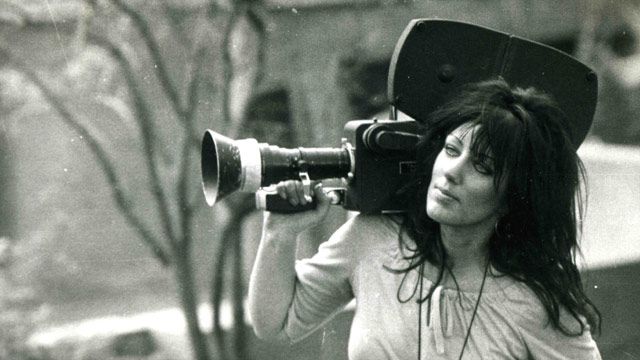
It was a slow news day, and a Saturday at that. Somehow Margaret had talked the Assignment Desk into letting her do a story or photo essay on skydiving. (Maybe there had been a skydiving accident recently, and she was going to get some "reaction"?) Whatever the ruse, Margaret and a few of her parachuting budds were going to get a dive in. While on the clock.
Most of my job at the CBS-affiliated Tee-Vee station during this period had me running the "live trucks." The microwave or satellite trucks that could beam a live video signal back to the station. Reporters and their photographers could edit their stories in the van and we would feed the video back. Everyone is familiar with the "Live on the Scene" report that would follow.
Margaret had disappeared into the airplane hangar while I set up the truck. It would be an easy day, hanging out at an airfield, watching humans drop from the sky at terminal velocity. A curious, older guy stuck his head in the van and we exchanged pleasantries. With a sort of Sheriff-Andy-Taylor-from-Mayberry demeanor, he asked the usual technical questions, though he seemed more tech-savvy than many. A couple of the skydivers were coming out of the hangar, buckling and strapping up. The older guy asked if I was going up with them. Uh, no... I gave the usual line about 'why jump out of a perfectly good airplane...' He grinned and said, 'well... I'm the pilot. Come on up and we'll drop these folks.' My mind started racing with thoughts about life insurance, corporate policy on joyriding in random airplanes, or what might happen when the Assignment Desk called to send me off to some emergency and I was goofing off at 14,000 feet...
The jumpers were all beginning to gather on the tarmac, cutting up and having the kind of time one has when one is preparing to walk out of an airplane with a bright round tablecloth and some twine to slow their drop. They all turned and someone yelled "Margaret!" Margaret walked out of the hangar, barefoot, wearing nothing but a parachute and a bikini. (Weren't there rules about appropriate dress for jumping out of airplanes? Shouldn't someone tell her? But who? And why would she listen to such a thing?)
Sheriff Taylor looked at me and said, "you going?" Well... duh.
We all piled into a little twin-engine "Otter," a small plane favored by skydivers and drug lords. A short school bus with wings, it was a STOL... 'short take-off and landing.' I sat in the co-pilot's seat and noticed the loose wiring hanging from underneath the dash. Various instruments were labeled with Dymo labeling tape. Yeah, this little bird had made a few low-altitude runs across some borders.
I looked back to see Margaret beaming. She gave me a big thumbs up as Sheriff Taylor throttled the de Havilland up. Within seconds we were airborne and he was spinning that altimeter at an alarming rate. Like a hawk circling up with the thermals, we spiraled ever higher as the jumpers double-checked their thingees and their gizmos and set their doo-dads. Only minutes later, Sheriff asked if they were about ready. They all nodded and grinned. He nodded in return, and before I could fully turn around to watch, they were gone, every one of them disappeared out the door as if that was a normal thing to do.
Sheriff asked me if they were all out and I nodded. He gave me the slyest of grins and said, "this is when I like to have MY fun. Let's beat them down." At which point he went all Tora! Tora! Tora! on me. He slammed the yoke into the dash. The nose went down into a dive so fast that my feet flew up and hit the instrument panel. My mind (the only one, it seems, that had been aboard that plane all day,) went from insurance and corporate policy concerns directly into funeral wishes. Maybe I should have jumped. The odds were about the same, I figured.
I honestly don't know if we beat them down or not. Let's call it a tie. I was more preoccupied with finding a men's room to check my undergarments for any unplanned fecal blowouts.
The jumpers were wrapping up their chutes after perfect landings. More laughter, some back-slapping. Margaret, her shock of jet black hair, her blue eyes framed in dark, thick eyeliner, her lean figure... landing on planet earth wearing little more than a bikini and the most engaging smile you can imagine.
This moment in time is who she was.
Margaret was fearless and was not afraid of grabbing life by the balls!
-Tec Maynard, photojournalist, retired, KHOU.
Margaret Wilson was born in Gisborne, New Zealand and loved photography as a child, getting her first camera when she was 8. She would later say that she didn't necessarily want to be a professional photographer, but it was a way for her to see history unfold before her. She would become the first female photojournalist in New Zealand.
As a young woman, she would change her name to Margaret Gipsy Moth. This was in admiration for the Gipsy Moth airplane, a post WWI-era biplane. The name fit. Except for the fact that she liked jumping OUT of airplanes as much as she admired the planes themselves.
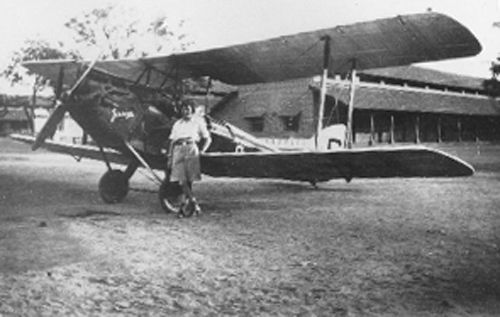
She was the first female photojournalist in New Zealand, and would end up at TVNZ, the national channel there. She moved to Houston, Texas, and spent about seven years working at KHOU, the local CBS affiliate.
It was there that I got to know her, and she fit in with the misfits that made up the broadcast news operation. The station had been mired in 5th place in a 3-way news market. But in the years that we were there, a change in ownership and management along with an influx of solid talent (and some decent budget increases) made KHOU a competitive and more interesting place to work.
It could be a fun place, too. And the "Gipsy Moth" was a big part of that fun.
A lifelong vegetarian, it was sometimes hard for her to find any kind of appealing meal while running around the city, covering breaking news, or working on ever-present deadlines. Worse, it was still a very male-centric profession, though obviously she and others were trying to break that down. This meant that the "guys" were perfectly happy to grab a drive-through burger or take a quick break to grab that ever-popular Houston mainstay... BBQ. Margaret would complain that there would be nothing for her to eat.
"C'mon Margaret. They have beans and stuff."
"Beans, beans, beans. Fucking beans! That's all you men ever want to feed me, fucking beans!"
"jeez, Margaret, have some damn potato salad. JEEEEZ," we would huff.
In 1980s Houston, a group of artists, creatives, and free spirits formed in the downtown area. They were known as "The Urban Animals" and they roller skated around the streets and bars late at night. Urban decay was rampant in many downtown areas in the 80s, and Houston was no exception. There was no fancy nightlife to speak of and this was decades before high-rise housing would become a thing. The Urban Animals would roll between the quiet office towers in benevolent packs. Riding the ramps inside dark parking garages, skating up and down abandoned downtown streets, and finally meeting up at the few dive bars that managed to hang on through the 80s oil bust.
These were Margaret's people. Later, young lawyers and accountants, unhappy with their dreary careers, would put on some torn black jeans and a pair of rollerblades and slum it with the cool kids.
In November 1989, when the legendary Checkpoint Charlie at the Berlin Wall had swung open on both sides of the Iron Curtain, she and her boyfriend knew they had to get to West Berlin. This was their opportunity to see East Berlin by crossing through Checkpoint Charlie, on skates.
They arrived within a couple of months of the opening on a cold winter day, passports in hand, skates on their soles, and glided into East Berlin. Margaret would later admit they felt a bit nervous as they started to make their way to the Brandenburg Gate. As they skated across a busy road, they heard sirens go off, and wondered if they had made a horrible mistake. Their anxiety quickly dissipated as the sirens trailed off into the distance. Wheeling through East Berlin, they no doubt elicited some stares but encountered no trouble with East German security or anyone else.
In a great irony, though, Margaret couldn't experience comparable freedom in downtown Houston. A year or two earlier, a particularly vindictive Houston cop actually arrested her for skating on the street, and she spent the night in jail. But like the much greater ordeals she was to come up against, it would not, could not, deter her from pursuing her next adventure.
-Nathan Kvinge, photojournalist, KHOU
Like many folks with semi-interesting jobs, Margaret might show up at the Tee-Vee station with some friends or maybe a date to give them a tour of her high-tech workplace. The station was only a few blocks away from downtown and it was a 24-hour operation, so nighttime was a good time to impress that special someone. Margaret seemed ageless (she couldn't still be in her twenties, could she? Thirties, maybe? Probably forties, but she didn't ACT like a forty-year-old!) She was known to flirt with and date some fairly young guys. More than one wag gossiped about her penchant for these cute, younger men. One scold finally confronted her, asking her in an exasperated tone, "Oh Margaret, what do you even TALK about with these boys?"
"Talk to them? If I wanted to TALK with them, I wouldn't go OUT with them!"
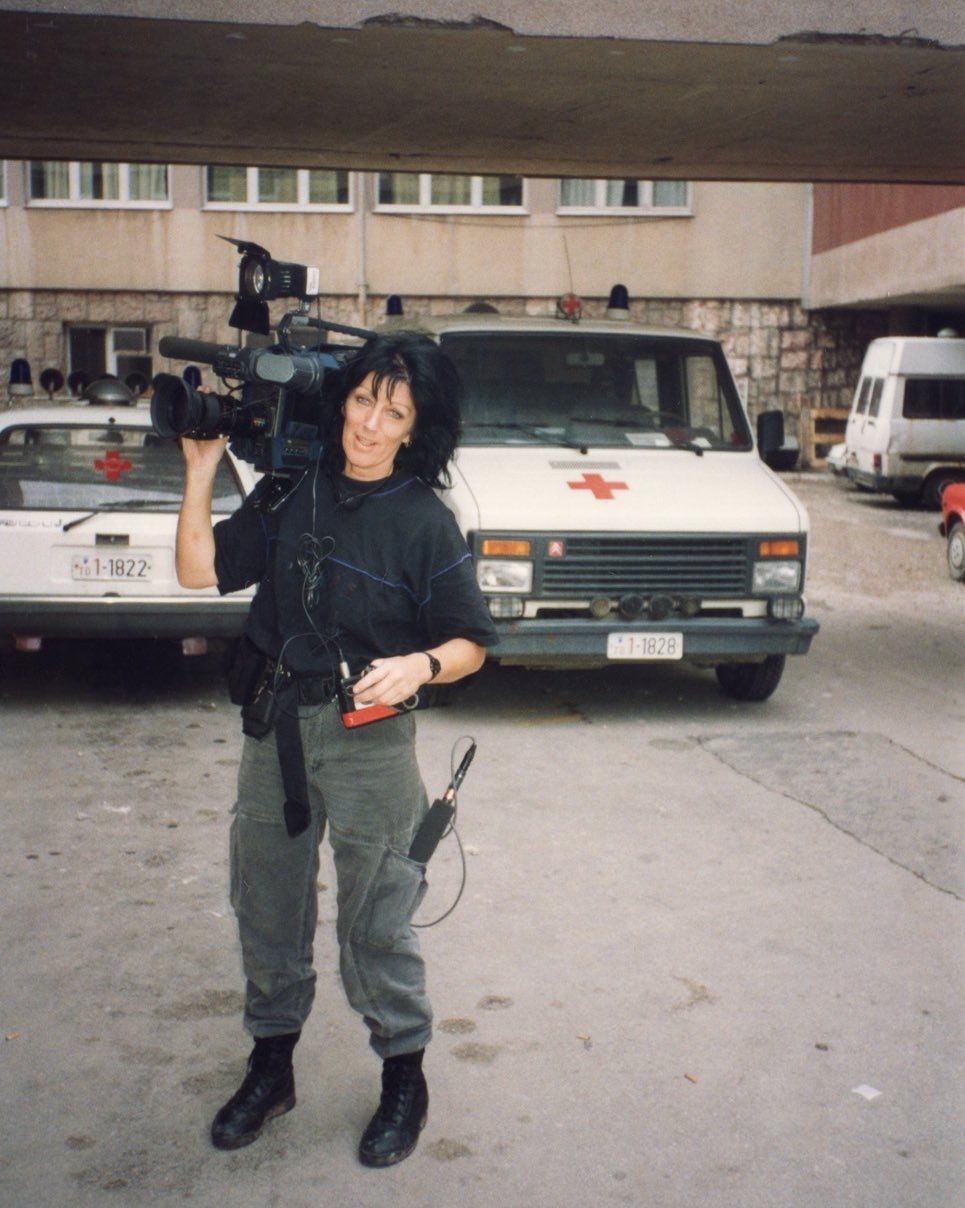
She was Goth before there was Goth and was recognizable from a mile away. Her black spikey hair - not unlike Tina Turner or Joan Jett, her dark black eyeliner that framed bright blue eyes, her dark pants and top, and usually some form of black boots. Her features were angular. She was lean and strong, the result of carrying twenty to thirty pounds of gear on her shoulder and wearing a cargo or battery belt all day. She dressed tough and worked in a still male-dominated profession. But a certain feminity always showed through. Yeah, she was one sexy Urban Animal, so to speak.
Her talent was indisputable, but she wasn't in it to earn a huge promotion or climb a corporate ladder. She was content to hang out with the gang, drink you under the table, or puff a fat cigar with the guys. Just make sure she was sent out to cover the action.
Fellow Texas Outlaw Writer (and a KHOU alum hisownself) James Moore once described Margaret as a "swashbuckler." I think that's accurate. Mr. Dictionary says that a swashbuckler is, "a person who engages in daring and romantic adventures with bravado or flamboyance." Yeah. That's it. That was Margaret.
And honestly? She didn't really dress for attention. She didn't strut or preen or try to impress you with her style. The Moth was an original, she was who she was. That's not to say she didn't have an ego or a sense of her own appearance. But this was a TV newsroom, whatever vanity she might have had couldn't hold a candle, much less a 1000 Watt Fresnel light to some of the on-air talent who she worked with every day!
"She went and interviewed then Texas governor Bill Clements." [Bill Clements was an old oil man who was the first Republican to hold the Office of Governor since Reconstruction. He was a brusque, curmudgeonly figure. A good-old-boy's good-old-boy] "Clements was an old-school Texan as you know and was eyeing Margaret with her wild jet black hair the whole time she was setting up for the interview. Margaret gets to the point of clipping on a lavalier microphone on him and he's still staring at her. He finally says to her in his heavy country accent, "You're not from around here, are ya."
-Jimmy Wong. freelance photjournalist, former KHOU photojournalist.
And funny? With a straight face and a dry delivery, she could double you over with laughter. Right before a live shot, she ran to my live truck and started rummaging through some of the tackle boxes which contained wiring adapters, microphones, etc.
"What are you after?" I asked.
"I need one of those ear condoms."
"Wha???"
"You know, those little ear rubbers. They go in your ear."
I had to laugh. She needed an earpiece... the little rubber earphone that attaches to a little belt pack amplifier that you see reporters wear in their ears, listening to the news anchors ask them questions while they are reporting live.
"Margaret was never hidden in any crowd. Her dark black look, from her thick, jet black hair to black outfit with black boots, punctuated by her pale skin and brilliant blue eyes made her pop in any crowd. She was a woman working in a man’s world and she more than held her own. A super cool lady who I invited to my own bachelor party thirty years ago. There was Margaret, in a room full of rowdy men celebrating an impending wedding and she fit right in. I’m glad she was a part of it."
-Jaime Zamora, photojournalist, KTRK, retired.
She was known as much for her soft side as she was for her tough exterior. A remarkable empath, it was difficult to imagine how she could carry on in the midst of the so much suffering that she would witness during her career. People opened up to her and shared intimate details of their lives. Her kindness drew folks like a magnet.
"Margaret refused to eat animals, She said plants can be pruned and not destroyed from our eating them.
She dated a man 19 years her junior without shame or the need for anyone's approval.
She told me about New Zealand and said that it was a fair place compared to this country. She resented what she called the assumed racism she found in Texas. She said, "Because I'm white, they say racist things to me assuming I agree."
She was an empowered woman. I was an insecure anchor/reporter needing the approval of everybody. She tried to get me out of that mindset. She knew I was unhappy when everyone else thought my life was perfect. I had a big home, a successful spouse, baby, and the trappings. She saw through it all and told me. She was an insightful, grand spirit."
-Myra Jolivet. former KHOU Anchor, reporter. Currently author, media/political consultant, Texas Outlaw Writer
Woe be to the cocky male that wanted to debate her about current events, international affairs, world history, or <name your topic here.> Her debate was passionate but almost never combative. But she was not going to back down because a "girl" should. Many a hothead walked away from an argument after having been owned by that lady in the combat boots with the funny accent.
This cocky male was having a discussion with her over a local political candidate or the important public policy du jour. (Local television, btw, was very competitive about providing live election coverage, I'm sure we were out in the field awaiting election returns.) Somehow, the conversation swung around to voting and turnout, etc. She suddenly said, "I don't vote."
I was shocked. Here, this well-informed woman who knew the importance of good public policy and had for years seen the results of poor political decisions... claiming that she didn't vote!
Hoping to play off of her "foreign" beginnings, I mansplained that as a citizen, it was her responsibility to vote."
She looked at me and stated defiantly, "I'm a citizen, of the world!"
I was flabbergasted then. Now? Not so much.
Margaret's end-game was not about working in a good broadcast market for a decent salary and settling down. She wanted to see the world. She wanted to see history unfold right before her lens. She wanted to see some action. She often wondered what it would have been like to have been a part of the great events of the past. So it was no surprise that one day in 1990 she announced that she was going to work for CNN. CNN, in those days, was an aggressive worldwide newsgathering operation. Working for them was a ticket to the world's great cities and also its hot spots. A CNN assignment might as well have been a military deployment. You might find yourself in the middle of all manner of mayhem. And Margaret often did.
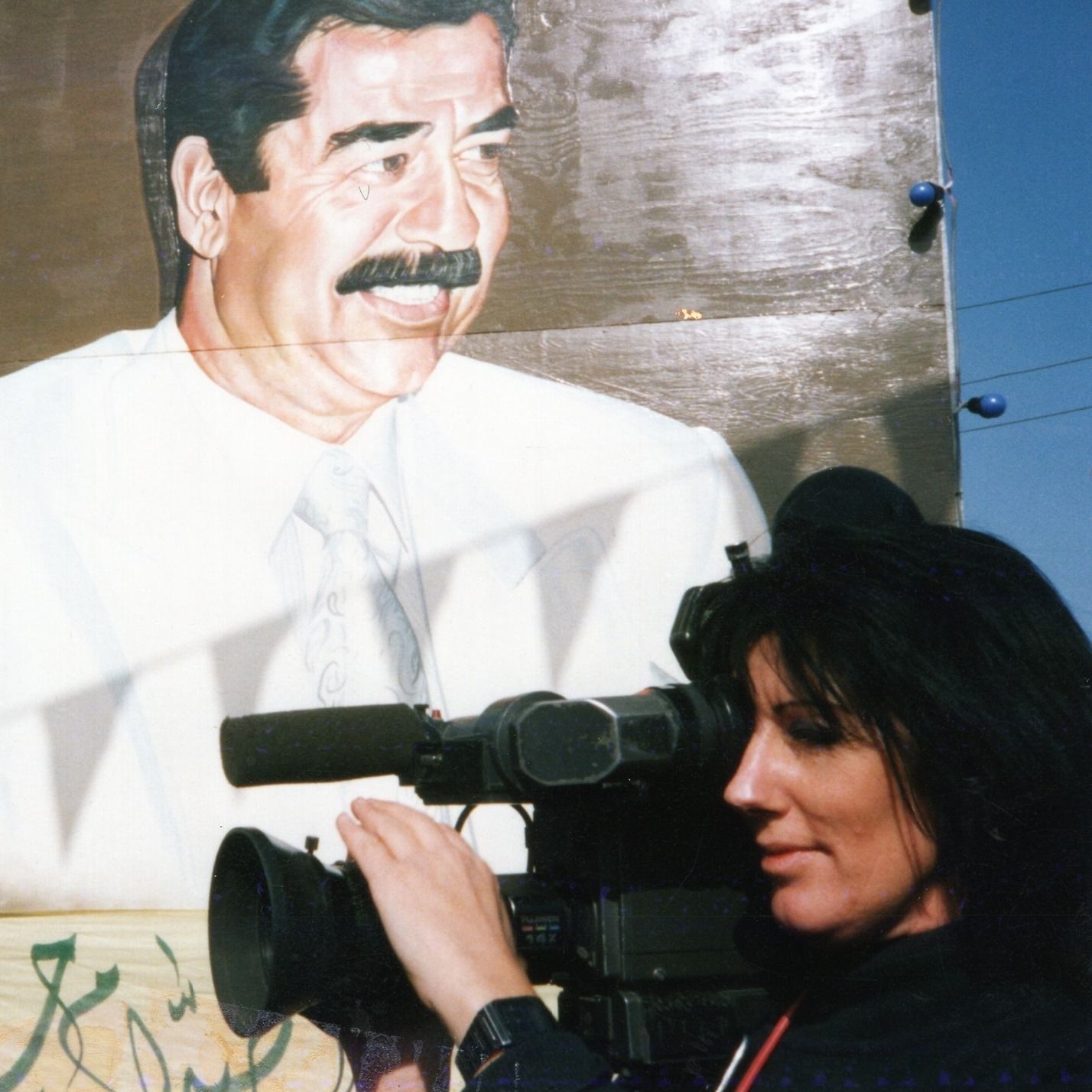
She covered the Persian Gulf War, the rioting that followed Indira Gandhi's assassination, the civil war in Tbilisi, the conflict in Georgia, and the Bosnian War. Her producers, correspondents, and security teams would, again and again, refer to her as fearless as she sprinted ahead of them... toward the danger.
In July of 1992 during the Bosnian War, her luck would finally run out.
A sniper caught her across the face with a high-powered rifle round, shattering her jaw, her teeth, and part of her tongue. It happened along the infamous "Sniper Alley" in Sarajevo. She would survive, though it would take dozens of reconstructive surgeries and a lot of therapy to put her back together. She was disfigured and had difficulty speaking, but this was Margaret. In about 6 weeks, she demanded to be sent back. To Sarajevo. To the action. She joked that she wanted to find her teeth.
After she was shot, we got a group of local photographers to meet her for lunch. Even with her disfiguring injuries, she still had spirit and beauty. She was a gem.”
-Jaime Zamora, KTRK photojournalist, retired.
The last time I saw Margaret was at an awards ceremony in Dallas. It was after her injury and she was still recovering from it. She had difficulty talking and covered her mouth where she was injured but she was still the same Margaret we all remembered, the injury didn't seem to have changed her spirit one bit.
-Jimmy Wong, freelance photojournalist, former KHOU photojournalist
She came through Houston during her recovery period before she shipped back out. A bunch of people from the station met up with her. The above recollections mesh with mine. We were all curious in that morbid way when visiting someone after trauma. ('What will she look like? Will she have changed? Will we have to be careful with our conversation?) Margaret was the one that put us all at ease. She had a fashionable scarf around her neck that she held as a veil against her face. She would often drop it to speak, and between her New Zealand accent (which had never faded,) and her injuries, you really did have to work to understand her. But there was still laughter, humor, and her indomitable spirit. The toughest men in the room were incredulous that she wanted to return to a war zone.
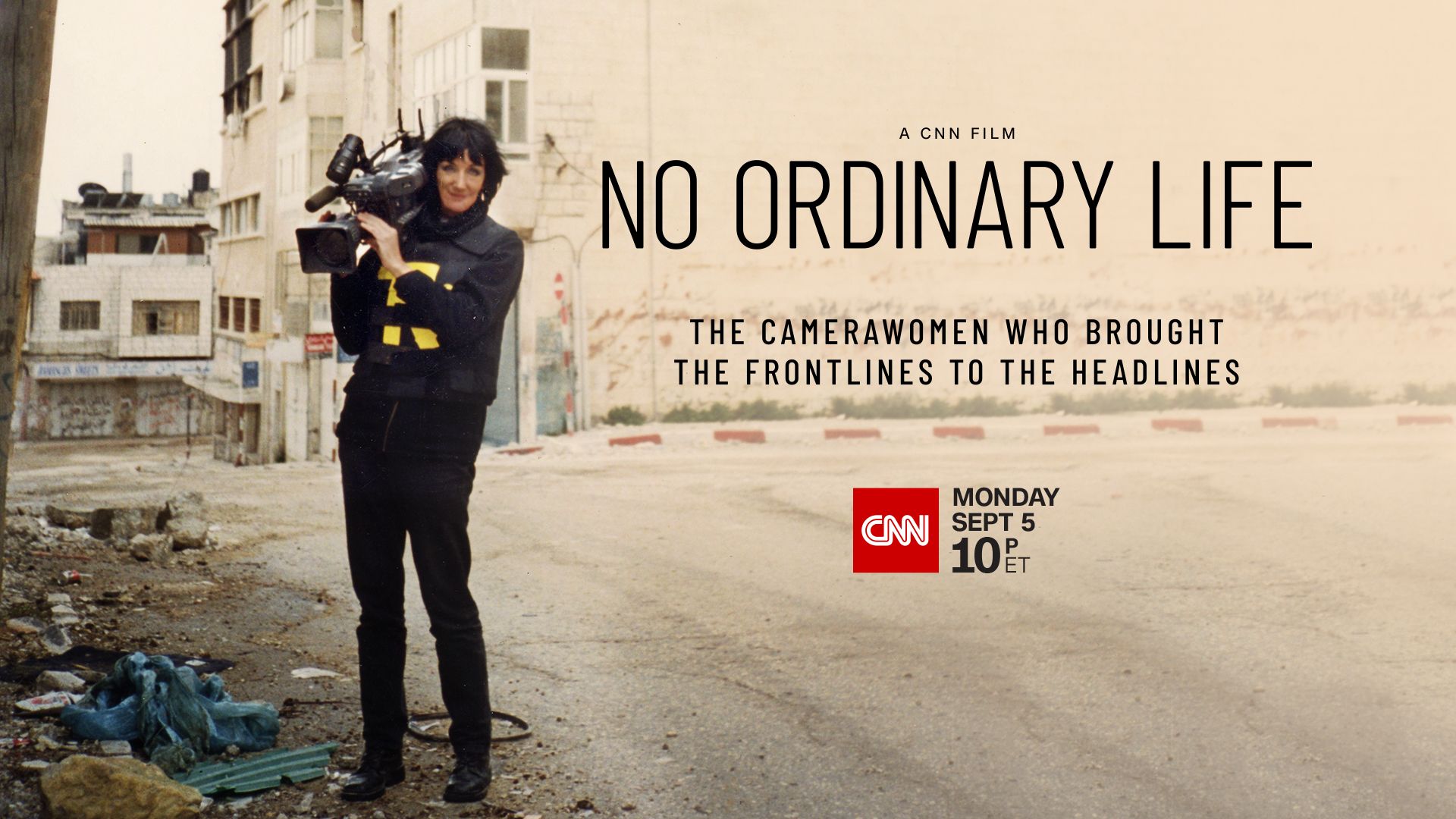
She did return. She worried about her looks, her ability to communicate, and how she might handle her fear. Her CNN colleagues (and yes, even management) were as supportive as any close family could have ever been. After all, she had encouraged and empowered them for so long.
I was in Houston with my parents because my preemie twins had just been delivered and they were at Texas Children's Hospital, and would be for a while. I called Margaret to say hi and see how she was doing. She was recovering from the sniper wounds so could not talk, but Margaret had a clicker of some kind to respond on the phone. How are you? (click - well) We are thinking of you (click- thanks!) I have two baby girls and they are really tiny and really cute. Click! click! click! click! click! Although Margaret never said a word, we had a great conversation and her happiness for me was obvious. That was SO Margaret. She had her serious medical troubles, but she was still joyful.
I think of her often.
Adela Gonzales White, Marketing consultant, former reporter- KHOU.
She DID go back. Back to the battle lines. The work she did was as strong as ever. Her co-workers were in awe.
And then in one of those cruel ironies that life deals out when least welcome or expected, Margaret was diagnosed with colon cancer. As with all the other obstacles that she had faced, she dealt with it with grace and humor.
"Dying of cancer, I would have liked to think I'd have gone out with a bit more flair," she told a documentary crew.
She told one interviewer, "People say, 'Ah, people like you — you have a death wish. And it used to make me so angry. I thought, don't you dare insinuate I have a death wish. I don't know anyone who's enjoyed life more or values my life more."
I can't say that we were close friends. I was lucky and happy to have worked around a newsroom in an era when television journalism was fairly well-funded, when technology was making it easier to take reporters and photojournalists out to where the news was happening, and there was still some public trust in journalism as a whole. But even in an organization full of smart and interesting people, Margaret stood out. She was a constant delight to be around. You always learn the hard way that the old cliche "you never know what you got 'till it's gone" is not a cliche at all. There are probably some Moths around you, so take stock.
Moths seek the light. In doing so, they risk burning themselves. Margaret "The Gipsy Moth" dropped from the sky and never worried about the heat. She was always about that light.
"The important thing is to know that you've lived your life to the fullest," Margaret said... "I don't know anyone who's enjoyed life more."
One final thought... if you have a teen that might need a little inspiration... especially a daughter in need of seeing a strong woman quietly succeeding in a tough profession, in a tough world... (and doing so with grace, kindness, and a sense of humor,) find one or two of these documentaries to watch with her. Don't TELL your kid that it's for their own good! Just watch one with them! (Check for age appropriateness, of course.) Or you can support another doc that one of her closest friends is raising money for.